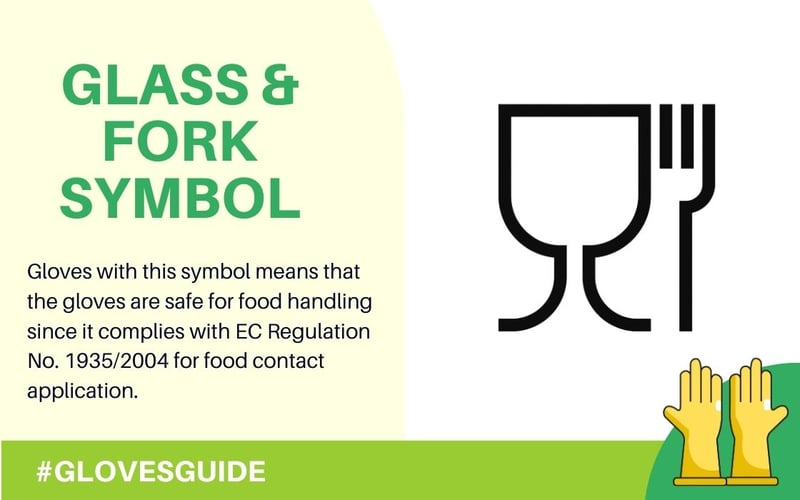For food handling, it is important to keep in mind that good food safety practices are the priority.
Be it in the food processing industry that handle poultry, or in the food service industry that turn raw food into ready-to-eat food, protecting food from bacterial and viral transfer from a gloved hand is essential.
Gloves play a major role as PPE to enhance your food safety programs to prevent food-borne illnesses. Hence, it is essential for business owners and safety officer to understand the criteria when choosing gloves for food handling purpose.
However, there is one thing that we as a gloves manufacturer would want to clarify when we talk about safety gloves for food handling.
We usually see people wearing disposable gloves when handling food, be it at the bakeries, hawker stalls or even restaurant kitchens.
We are in such difficult disposable glove market right now, where the demand for disposable gloves has consequently gone through the roof.
We will be discussing 5 criteria to look at when choosing gloves for food handling:
# 1: Food safety related markings & regulations
# 2: Gloves materials
# 3: Grip pattern on gloves
# 4: Gloves size/ fitting
# 5: Gloves color
Let us go through all these criteria together!
#1.1 Glass and Fork Symbol
Gloves must comply to regulation to make sure it is safe.
Within the European Union, all food contact materials and articles that intended to come into contact with food need to comply with the EC Regulation No. 1935/2004. In this article, the food contact material will be gloves.
The EC Regulation No. 1935/2004 states that:
Food contact materials must not transfer their components into food in quantities that could endanger human health, change food composition in an unacceptable way or deteriorate its taste and odor.
Food contact materials must be traceable throughout the production chain.
Materials and articles, which are intended for food contact must be labeled with the words ‘for food contact’, or a specific indication as to their use or use the glass and fork symbol as below:
If you are looking for gloves to handle food, take a closer look at the gloves manufacturer website or gloves packaging and spot for this symbol. Gloves with this symbol mean that the gloves are safe for food handling since it complies with EC Regulation No. 1935/2004 for food contact application.
All of our products are in compliance with EC Regulation No.1935/2004 for food contact applications.
#2: Gloves materials
Should I choose PE gloves, natural rubber gloves or nitrile gloves for food handling?
PE gloves, natural rubber gloves and nitrile gloves are all suitable for food handling.
PE gloves are of the lowest cost as a disposable PPE item and tactile and protective, natural rubber gloves are more flexible and provide good tactile sensitivity, nitrile gloves offer superior resistance to abrasion, cut and puncture compared with natural rubber gloves.
In addition, PE gloves do not contain latex protein, which eliminate the chance of developing Type I latex allergy.
#3: Grip pattern on gloves
Grip are especially important when it comes to food handling.
Imagine the fish or potatoes on your hands just slip away in the next seconds even you have your gloves on. Totally unacceptable, right?
Applications that involve handling poultry, seafood, raw potatoes, and other vegetables with slippery surfaces and some red meat products may require a glove with a raised pattern, textured or embossed surface to promote a better grip.
We have specially designed raised different patterns on the palm and fingers of gloves to provide excellent grip in both wet and dry conditions.
# 4: Gloves size/ fitting
A properly fitting glove is vital in maximizing protection as well as comfort while wearing the gloves.
In the food processing industry, hygiene is the main concern, that is why it is unavoidable that workers in the industry are required to put on their gloves for long hours.
If the gloves are one size bigger or one size smaller, it might cause hands fatigue and inefficiency, end up affecting the job output.
Because we understand that unfit gloves are totally intolerable, that is why we have designed our gloves in 4 different sizes to cater the needs of adult hands.
In the world of gloves, there is no one size fits all solution.
# 5: Gloves color
Have you ever wondered why most of the gloves that are being used to handle food are in blue color? Especially those gloves that are being used in the food processing industry that are handling poultry, such as chickens, turkeys, ducks etc.
The reason is that:
Blue is a color that contrasts sharply with poultry. If a glove is accidentally torn during the process, it will be easier to detect the torn pieces of the glove.
And it is definitely a bad experience if the torn gloves pieces are accidentally being transferred along the food processing and end up in the hands or mouths of end customers.
So, if you are sourcing for gloves intended for food processing purpose, it would be great to share more information about the process that the gloves are going to handle with the gloves manufacturer.
It is not merely about the choice of gloves color, but more importantly it is about the gloves users, the process owners and also the end customers.
**************************************************************************************************************
Worldchamp PE gloves meet food contact standards of EU, US and Canada, passed the relative tests as clients requests.
Besides of PE gloves, our items for food handling include apron, sleeve, boot cover, PE Bag for butchery,etc.
Post time: Nov-17-2022





